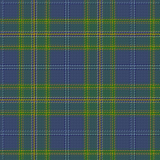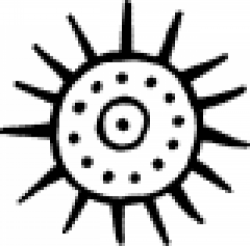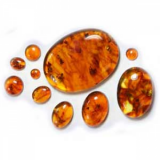What's the meaning of the Lauburu »
Lauburu
This page is about the meaning, origin and characteristic of the symbol, emblem, seal, sign, logo or flag: Lauburu.

The lauburu or Basque cross has four comma-shaped heads. It can be constructed with a compass and straightedge, beginning with the formation of a square template; each head can be drawn from a neighboring vertex of this template with two compass settings, with one radius half the length of the other.
Historians and authorities have attempted to apply allegorical meaning to the ancient symbol. Some say it signifies the "four heads or regions" of the Basque Country. The lauburu does not appear in any of the seven coats-of-arms that have been combined in the arms of the Basque Country: Higher and Lower Navarre, Gipuzkoa, Biscay, Álava, Labourd, and Soule. The Basque intellectual Imanol Mujica liked to say that the heads signify spirit, life, consciousness, and form, but it is generally used as a symbol of prosperity.
After the time of the Antonines, Camille Jullian finds no specimen of swastikas, round nor straight, in the Basque area until modern times. Paracelsus's Archidoxis Magicae features a symbol similar to the lauburu that is to be drawn to heal animals. M. Colas considers that the lauburu is not related to the swastika but comes from Paracelsus and marks the tombs of healers of animals and healers of souls (i.e. priests). Around the end of the 16th century, the lauburu appears abundantly as a Basque decorative element, in wooden chests or tombs, perhaps as another form of the cross. Straight swastikas are not found until the 19th century. Many Basque homes and shops display the symbol over the doorway as a sort of talisman. Sabino Arana interpreted it as a solar symbol, supporting his theory of a Basque solar cult based on wrong etymologies, in the first number of Euzkadi. The lauburu has been featured on flags and emblems of various Basque political organisations including Eusko Abertzale Ekintza (EAE-ANV).
The use of the lauburu as a cultural icon fell into some disuse under the Fracoist dictatorship, who repressed many elements of Basque culture.
- 1,154 Views
Graphical characteristics:
Asymmetric, Open shape, Monochrome, Contains curved lines, Has crossing lines.
Category: Miscellaneous.
More symbols in Miscellaneous:
Symbols without any special category attribution but that are widely used worldwide. read more »
Citation
Use the citation below to add this symbol to your bibliography:
Style:MLAChicagoAPA
"Lauburu." Symbols.com. STANDS4 LLC, 2025. Web. 3 Mar. 2025. <https://www.symbols.com/symbol/lauburu>.












Have a discussion about Lauburu with the community:
Report Comment
We're doing our best to make sure our content is useful, accurate and safe.
If by any chance you spot an inappropriate comment while navigating through our website please use this form to let us know, and we'll take care of it shortly.
Attachment
You need to be logged in to favorite.
Log In